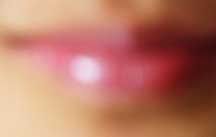
Hot cross buns
Moving away from classic French-style desserts and diverting our attention to some other well-loved desserts and pastries from other countries and cultures.
We made hot cross buns and baklava during Thursday’s class.
Hot cross buns at the end of August does sound a little strange. After all, they are meant to be eaten over Good Friday and Easter. Nonetheless, they were yummy buns sweet buns spiced with cinnamon, nutmeg and mixed spice with sultanas, currants and mixed peel.
Even though I don’t really see them much in Singapore, hot cross buns have been a childhood memory from the books that I have read and the song about hot cross buns (I can still sing it!).
A warm image comes to mind when I think of hot cross buns. A mother opening the door of her oven and carrying out a tray of freshly baked hot cross buns, all a shade of golden brown. And then, there is the sweet smell of bread that fills the entire house. Two kids come running down the stairs, following the smell which leads them to the kitchen table. Mother then serves her children those warm buns with a mug of hot chocolate for a late afternoon tea.
Hot cross buns, Hot cross buns
One a penny, two a penny
Hot cross buns!
The hot cross buns were not hard to make especially after having baked several types of bread. The only difference is that we had to pipe the cross mixture on the buns to give them their signature look and to finish them with an apricot glaze after they are baked to give it an attractive shines.

Diamond Baklavas
We prepared our baklavas concurrently. Baklava is a rich and sweet pastry made with layers of filo pastry filled with chopped nuts such as walnuts, almonds, cashew nuts, pistachios and sweetened with a syrup.
The origin of the Baklava is not well-documented although many ethnic groups has claim it as their own. Whatever its origin, the Baklava is enjoyed through Middle East all through to Greece.
I naively thought that we will be making the filo pastry sheets from scratch! However, chef K*aren told us that chefs don’t bother making their own filo because it is pretty difficult to roll them out into such thin sheets.
Having made a baklava, I doubt I would readily choose to eat one anytime soon. The amount of clarified butter (otherwise known as ghee) that goes into it is quite astonishing even for us pastry students who have been going through heap-loads of butter each week.
Besides the clarified butter, it is drenched(note the word, drench) with a sweet, sugary syrup.
If I were to make my own baklava, I think I would make it less sweet and let flavour it with a good amount of rose water to give it a good floral and distinct flavour which would be much better than plain sugary sweetness.
After a hectic week of baking gateaus, the pace in the kitchen slowed down significantly this week. With less stress, we can enjoy every bit of the lesson much more.

No comments:
Post a Comment